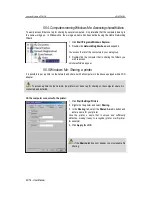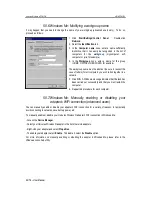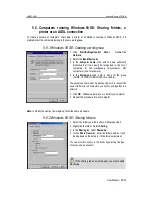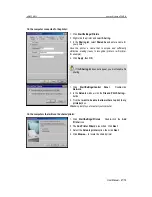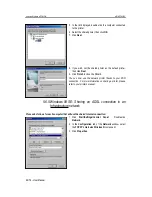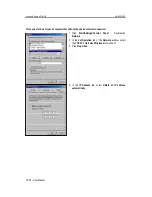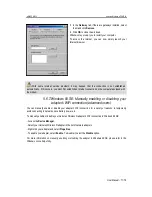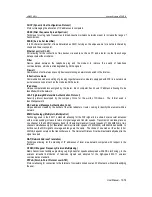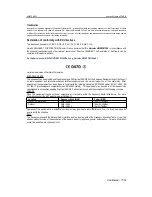
Hercules Wireless N PCMCIA
HWNPCM-300
72/79 – User Manual
6. GLOSSARY
802.11
Standard established in 1997 by the IEEE (Institute of Electrical and Electronics Engineers, an American
organization), defining wireless networks in the 2.4 – 2.48GHz frequency range and offering transfer speeds of
between 1 and 2Mbits/s. Revisions have been made to the original standard in order to optimize transfers
(this is the case for the 802.11a, 802.11b and 802.11g standards, referred to as physical 802.11 standards) or
to ensure better security or improved interoperability of equipment.
802.11b
Standard established by the IEEE (Institute of Electrical and Electronics Engineers, an American organization)
in the 802.11 family, allowing for theoretical transfer rates of 11Mbits/s in the 2.4GHz frequency range with a
physical range of up to 300m in an environment free from obstructions. The frequency range used is the
2.4GHz band, with 3 radio channels available.
802.11g
Standard established by the IEEE (Institute of Electrical and Electronics Engineers, an American organization)
in the 802.11 family, allowing for theoretical transfer rates of 54Mbits/s in the 2.4GHz frequency range with a
physical range of up to 300m in an environment free from obstructions. The 802.11g standard offers
backwards compatibility with the 802.11b standard, which means that equipment compliant with the 802.11g
standard will also work with 802.11b.
802.11i
Standard established by the IEEE (Institute of Electrical and Electronics Engineers, an American organization)
in the 802.11 family, whose goal is to improve security by integrating WPA-PSK authentication into AES
encryption. This Hercules client is compatible with this standard.
802.11n
Standard established by the IEEE (Institute of Electrical and Electronics Engineers, an American organization)
in the 802.11 family, allowing for theoretical transfer rates of 300Mbits/s in the 2.4GHz frequency range with a
physical range of up to 300m in an environment free from obstructions. The 802.11n standard offers
backwards compatibility with the 802.11b and g standards, which means that equipment compliant with the
802.11n standard will also work with 802.11b and/or g.
Access point
The access point is the heart of your local WiFi network. The system access point is a wireless router whose
function is to bring several clients together, which is to say link together all computers equipped with WiFi
adapters, thanks to its radio antenna.
Ad hoc mode
Mode allowing several computers equipped with WiFi to communicate directly with one another. This mode is
also referred to as Peer to Peer.
ADSL (Asymmetric Digital Subscriber Line)
This equipment, connected to a standard telephone line, offers great speed in terms of sending and receiving
data.
AES (Advanced Encryption Standard)
A symmetrical block-based encryption standard supporting different key lengths, this is a powerful, quick and
efficient encryption method.
ATM (Asynchronous Transfer Mode)
High-speed transfer mode for fixed-size data.
CCK (Complementary Code Keying)
Advanced encoding scheme for radio waves in wireless networks allowing for high transfer speeds.
Client
Computer equipped with a PCI, USB or PCMCIA WiFi adapter.





